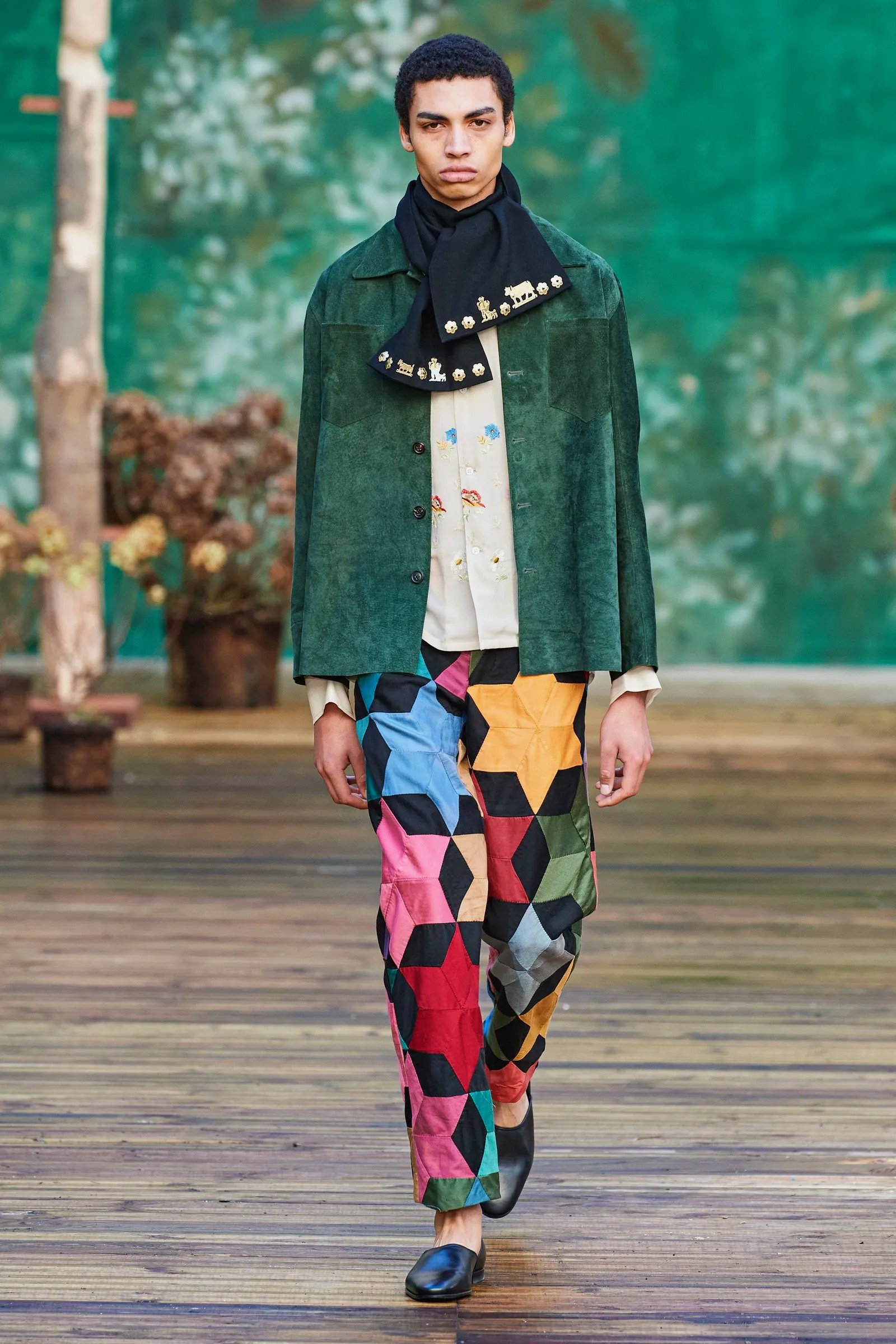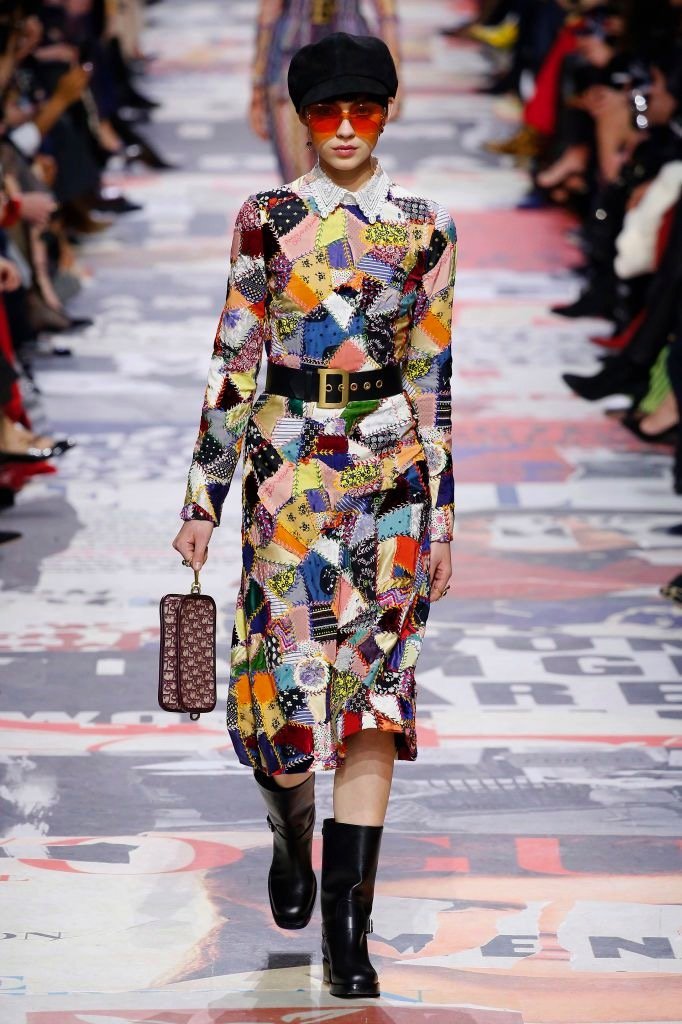From Your Grandmother’s Attic to the Runway: Quilting’s Trajectory in American Fashion
By Madeline Shean
Quilting has transcended its status as a matronly pastime, finding a place not only in the wardrobes of the self-proclaimed cottagecore trendsetters but in high fashion. The 2021 Met Gala theme In America: A Lexicon of Fashion, spotlighted a myriad of historical and contemporary American fashion trends, and quilting was no exception. ASAP Rocky donned an extravagant patchwork quilt cloak by designer Eli Russell Linnetz for the event, a style choice referred to by Vogue as, “the essence of American fashion.” While quilts have found their way onto the runways of many of the world’s most well-known and admired brands, they have been an integral staple of the American household since the dawn of America itself.
Though quilting is an art central to American folk culture, its origins can be traced back to Ancient Egypt through surviving ivory carvings that depict Egyptian royalty in quilted garments. Introduced to Europe during the Crusades, quilting was brought to what is now the United States by European colonizers in the 1700s. Poor early settlers repurposed worn-out clothing, fashioning simple quilts from cut-up scraps of cloth to keep warm during the winter months. The patchwork patterns of these early blankets are a reflection of their functional nature, and at the time, the finished products were not regarded as ‘real’ quilts due to their lack of color and decorative artistry. While quilts were originally popularized for their practicality, quilting emerged as an art form in the 1750s and, as America developed into a wealthier country, decorative quilts became a staple of the American household.
The evolution of quilting as an art form has preserved American culture and history in fabric and thread. As quilting became a more popular form of artistry in the 19th century, patterns advanced to include elaborate floral motifs and medallion patterns. It was at this time that quilting permeated the fashion world in both Europe and colonial America. Quilted waistcoats and jackets rose to the height of fashion and dresses began to exhibit a central opening in the front to display intricately quilted petticoats. Quilts and quilting became commonplace in America during the 19th century due to the development of domestically produced cheap textiles which quickly replaced the imported silks and velvet previously used. The invention of the sewing machine in the 1840s was also an important contribution to the rise of quilting as it allowed for necessary sewing, such as the production of garments, to be completed faster, allowing more time for the leisure of quilting.
While quilted garments fell out of favor during the early 20th century, they experienced a resurgence in the 1960s when patchwork and traditional quilt patterns became a trend in hippie counterculture. Over the years, quilted garments have found their way back into mainstream fashion. The growing emphasis on sustainability in fashion has pushed brands to use quilting for the same reasons it was historically, to repurpose fabric and reduce waste.
Bode, a sustainable luxury menswear brand, is a prime example of traditional American quilting practices in contemporary fashion. Created entirely from antique textiles, Bode’s collections, as stated by the brand itself, highlight “modern workwear silhouettes united with female-centric traditions of quilting, mending, and appliqué shape.” Quilting has also permeated the spheres of more widely known fashion brands, present in the runway collections of Dolce and Gabbana (2021), Calvin Klein (2019), Jean Paul Gautier (2020), Christian Dior (2018), and a myriad of others. While fashion trends are always shifting and evolving, quilting has stood the test of time, rendering itself a timeless American tradition in both fashion and folk culture.


